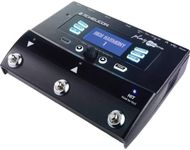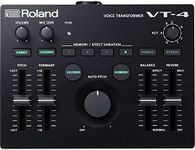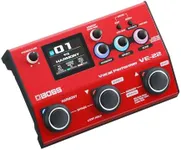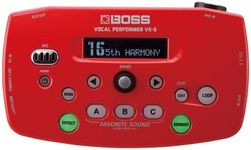Buying Guide for the Best Live Vocal Processors
Choosing the right live vocal processor can significantly enhance your performance by adding effects, harmonies, and pitch correction to your live vocals. To find the best fit for you, it's important to understand the key specifications and how they align with your needs as a performer. Here are some essential specs to consider when selecting a live vocal processor.EffectsEffects are the various sound modifications that a vocal processor can apply to your voice, such as reverb, delay, chorus, and distortion. These effects can add depth and texture to your performance. If you perform in genres that require a lot of vocal effects, look for a processor with a wide range of high-quality effects. For simpler performances, a basic set of essential effects might suffice.
HarmonyHarmony features allow the vocal processor to create additional vocal harmonies based on your input. This can make your performance sound fuller and more dynamic. If you often perform solo but want the sound of a full vocal group, a processor with advanced harmony capabilities is ideal. For those who perform with a band or other vocalists, this feature might be less critical.
Pitch CorrectionPitch correction helps to automatically adjust your pitch to the correct notes, ensuring that your vocals are always in tune. This is particularly useful for live performances where maintaining perfect pitch can be challenging. If you are a singer who struggles with pitch accuracy, a processor with strong pitch correction features can be very beneficial. If you are confident in your pitch, this feature might be less important.
User InterfaceThe user interface refers to how easy it is to navigate and control the vocal processor. A user-friendly interface with clear displays and intuitive controls can make a big difference during live performances. If you prefer to make quick adjustments on the fly, look for a processor with a simple and accessible interface. More complex interfaces might offer greater control but can be harder to manage in a live setting.
ConnectivityConnectivity options determine how the vocal processor integrates with other equipment, such as microphones, mixers, and PA systems. Common connections include XLR, USB, and MIDI. Ensure that the processor you choose has the necessary inputs and outputs to connect with your existing gear. If you use a lot of external equipment, look for a processor with versatile connectivity options.
Build QualityBuild quality refers to the durability and robustness of the vocal processor. A well-built processor can withstand the rigors of live performances and frequent transport. If you perform regularly and travel often, choose a processor with a sturdy build and reliable components. For occasional use, build quality might be less of a concern.
Memory and PresetsMemory and presets allow you to save and recall specific settings and effects configurations. This can be very useful for quickly switching between different sounds during a performance. If you perform a variety of songs that require different effects, look for a processor with ample memory and customizable presets. For more straightforward performances, fewer presets might be sufficient.





















